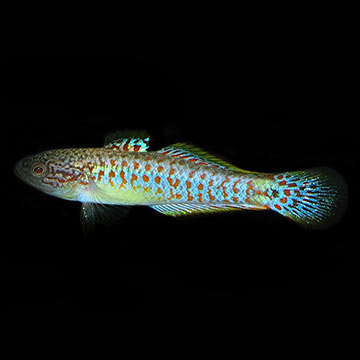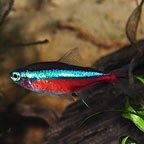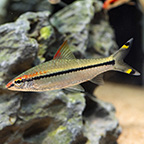
Additional locales and sizes may be available!
Additional locales and sizes may be available! Email me when availableQuick Stats
What do these Quick Stats mean? Click here for more information
What do these Quick Stats mean? Click here for more information
Overview
Proper care in a well- decorated or well-aquascaped aquarium with good filtration can encourage this fish to spawn in the home aquarium. Male Peacock Gudgeons are larger than their female counterparts, have rounded heads, and develop cephalic humps. Female Peacock Gudgeons are smaller with slightly more streamlined features. When female Peacock Gudgeons are ready to spawn, a prominent yellow patch develops on their abdomen. When ready to spawn, these egg-layers will clean out a selected spawning site in rockwork, cave, PVC pipes, flowerpots, and other niches. Once the eggs are laid, the male Peacock Gudgeon will defend the eggs until they hatch.
Offer Peacock Gudgeons a varied diet including quality prepared foods such as flake foods, as well as frozen or freeze-dried foods. Meaty, protein-rich foods like bloodworms and brine shrimp can encourage spawning.
Approximate Purchase Size: 1/4" to 1"








